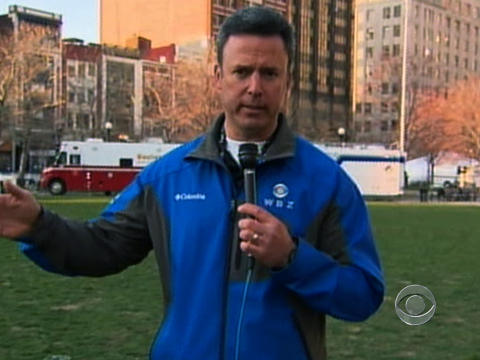Boston bombing exposes need for standard emergency procedures for wireless ENG
The latest terrorist bombing has led to yet another example of the fragility of cellular networks and their ability (or not) to reliably carry video signals when they are needed most. It’s become alarmingly clear that when disaster strikes, overwhelmed wireless networks become useless to emergency personnel and local news crews alike. In times of strife, trying to get the story out means managing your bandwidth properly. Stations ought to have an emergency procedures in place for this.

Making matters worse for reporters near the action, Boston police where moving live news (microwave) trucks further and further away from the bomb site at the finish line of the famed Boston Marathon, so some stations deployed bonded cellular camera transmitters. But, with a paucity of signal availability, images of on-camera reporters (for example, the WABC weatherman reporting live from the race he happened to be attending to see his brother run) often froze up and the audio was spotty at best.
At one point network congestion became so bad that the Massachusetts Emergency Management Agency pleaded with the public, via Twitter: “If you are trying to reach friends or family and can't get through via phone, try [texting] instead (less bandwidth).”
The major carriers—AT&T, Sprint, T-Mobile—were not asked to shut down their networks (for fear of helping set off yet another bomb) as some media outlets initially reported, and their networks did not shut down completely. Yet signal transmission reliability was an issue.
The FCC is reportedly working with the Department of Homeland Security and wireless carriers to address the difficulties of such situations. One solution might be to deploy temporary roving cell towers that can be set up quickly around an event such as the one in Boston. This strategy was used on Inauguration Day, but the cellular networks still strained to keep pace with demand.
At the recent NAB Show, suppliers of bonded cellular transmission technology were suggesting that a combination of cellular and microwave technologies was required in times of extreme emergency. They could not have predicted what happened in Boston, but they did envision a frighteningly similar scenario to what happened on Monday afternoon. This dual-path strategy would have worked in Boston.
Managing bandwidth is key, they all said. Sometimes that means transmitting a standard-definition signal (uses less data and thus less bandwidth) in order to maintain a reliable signal.
Get the TV Tech Newsletter
The professional video industry's #1 source for news, trends and product and tech information. Sign up below.
The bad news is that unfortunately we’ll see more disasters (both natural and manmade) in the future. The good news is that with each event, news crews are getting better at capturing the story and overcoming the adversity.
Current ENG technology can work if you know what you're doing. Maybe a “National Emergency Plan” for stations’ ENG operations is required, with the goal of developing a comprehensive field guide on how to use cellular technology to its fullest potential. The bonded cellular technology companies ought to band together and jumpstart this effort. It’s in their best interest (and that of the public service oath stations are supposed to adhere to), to do so.
Does your station have an emergency ENG plan in place? Let me know below. If not, I'd like to personally get this initiative going.
